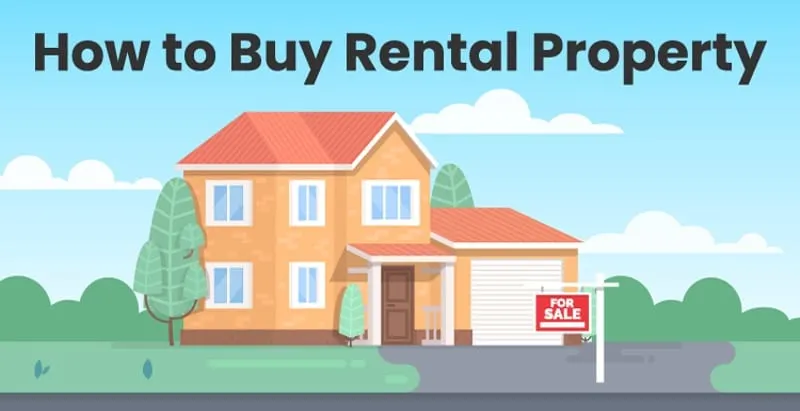Want to learn how to buy a rental property? Look no further than our complete guide.
We’ll cover tips and tricks for finding and managing your rental homes or apartments. Read on to learn more.
Considering Rental Property?
First, if you’re wondering how to buy a rental property, you’ve likely seen many online guides. Why should you trust mine?
Well, I worked as a property manager for 4 years, and now I write about real estate as my full-time gig. In a nutshell, I’ve personally invested in property and also worked closely with many expert investors.
Now that we have that out of the way, let’s jump in! I’ll show you why rentals offer steady returns, where to find them, and, most importantly, how to buy a rental property.
A Quick Overview
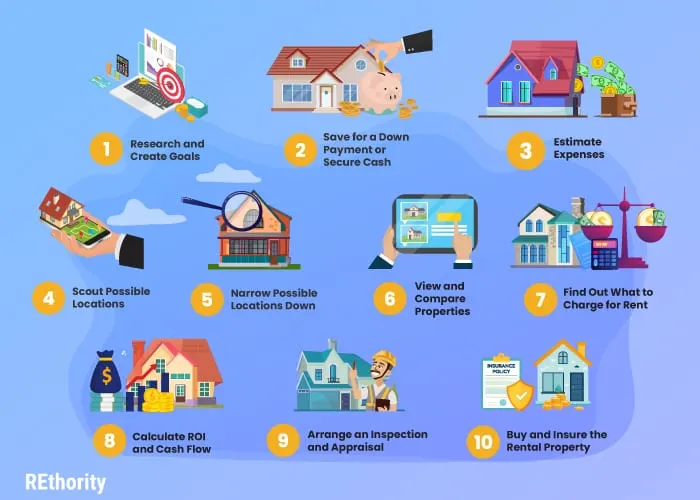
The major hurdle that most would-be investors face is finding a good deal without paying retail prices. I won’t lie, getting a deal is hard. But this barrier to entry is what separates the amateurs from the pros.
The bright side is that it’s easier than you think to start building your real estate investment portfolio. But first, there are some important considerations to know about.
First, you’ll have to be disciplined. It’s easy to get deals happy, which is the quickest way to get stuck in a money pit. Second, you have to know what you’re getting into.
The biggest mistake that most of my ex-clients made was thinking they’d have job-replacement income with a few properties. Sorry, but that won’t happen. The key to buying a rental property is to scale your processes.
Next, proper budgeting is crucial. Know the standard rules of thumb, especially the 50% rule. This states that your income will cover operating expenses. Finally, you need to understand what you’re getting into as a landlord.
Your Responsibilities as a Landlord
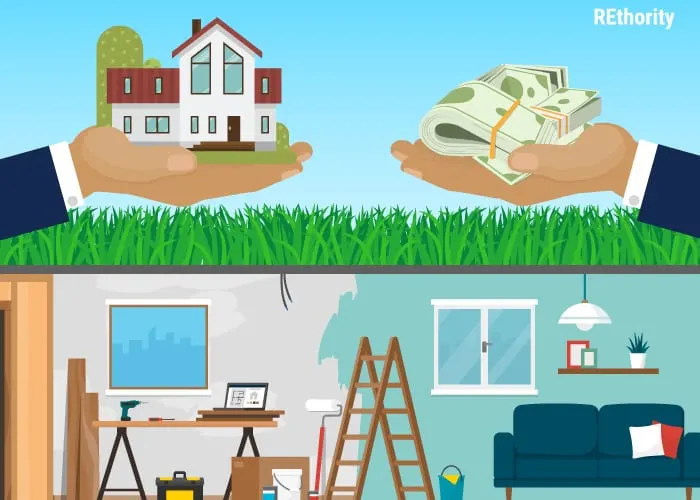
You’ll be responsible for the condition and safety of the property. You’ll need to gather applications, screen candidates, and place tenants. Complying with tenant-landlord laws is essential.
Then there’s the leasing process, rent collection, maintenance tasks and issues, tenant relations, inspections, and more.
You could also find yourself dealing with a host of potential problems, like nonpayment, evictions, and property damage from tenants. And don’t forget about the inherent financial risk involved with any investment.
Of course, there’s also a huge upside to buying rental property. A one-time purchase can net you monthly passive income for many years.
Your rental cash flow could be enough to finance your next investment. You’ll earn beneficial tax breaks. Your rental property will appreciate over time.
And you’ll be creating more housing options in your community. In this guide, we’ll show you how to buy rental property that doesn’t drain your resources and creates a wealth-building passive income stream.
How to Buy Rental Property
Buying rental property isn’t as easy as finding a house for sale and putting up a For Rent sign. If you want to make sure your investment is profitable, there’s a little more to it.
You’ll be glad you took some extra time to find the best property in your price range, secure reliable tenants, and plan for the unexpected. The first step you should take is to do research.
1. Research and Create Goals

Reading this guide is part of the research you’ll need to do. You need to know what to expect every step of the way, so you can be prepared for the entire process.
Now is the time to begin developing a big picture view of buying and renting out property. Consider who, what, when, where, and why to start planning the process.
- Who will you rent to? Your rental property will drain your resources without a reliable tenant. You’ll have to screen and find people to rent to. Consider your ideal tenant’s demographics. Think about their space needs, family size, age, and income.
- What kind of property are you looking to buy? Are you thinking about buying a single-family or multi-family property? Single-family homes are typically a better choice for first-time investors. Multi-family homes are usually more expensive and harder to manage on your own.
- When do you want to buy? Is this something you’re eager to start now to earn cash flow, or are you planning to get things in order and buy rental property later on? Do your finances allow you to move forward now?
- Where will the rental property be? You’ll also need to start thinking about where you might want to buy rental property. For a new investor, it’s best to buy a local property that you can be close to.
- Why do you want to buy a rental property? Considering your motivation to purchase rental property is important. Are you looking to earn passive income, start building an investment portfolio, rent temporarily, then sell, or “house hack?”
Having a clear idea of your rental property goals will point you in the right direction as you look for properties, scout locations, plan your timeline, and consider ways to market your rental.
2. Save for a Down Payment or Secure Cash
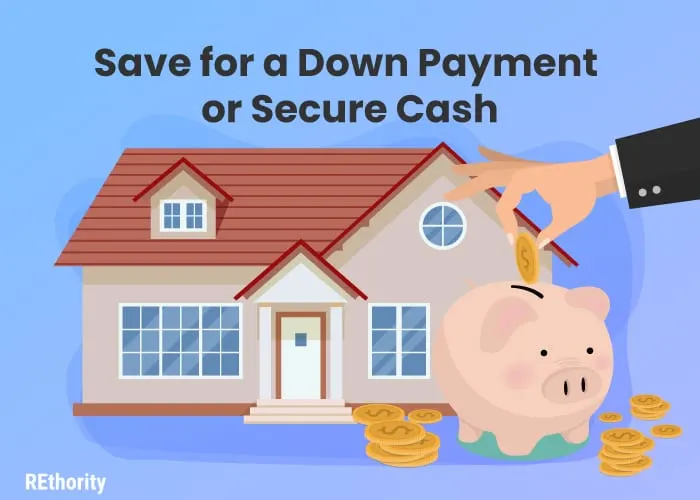
Buying a rental property is an investment that requires you to have access to either cash for a down payment or the entire purchase.
If this is your first investment, you’ll probably be financing the purchase and will need enough cash for a down payment. Most investment properties require a 20% to 30% down payment.
Mortgage insurance isn’t offered for rental properties, so the down payment is higher to compensate. You can save up for the down payment if you don’t need cash flow from the rental property right away.
You may be able to go to a bank for financing to get the amount needed for a down payment if you can’t come up with enough cash. If you have enough cash for a down payment, take this opportunity to get pre-approved for a mortgage.
This will give you an idea of how much you’ll need to finance when you find a property and confirm that you’re approved to borrow the amount you need. Learn more about mortgage pre-approval in our guide.
To get pre-approved, make sure your credit score is 680+. You must be able to submit proof of a steady employment history (2 years) or monthly self-employment income (3-5 years).
Be ready to show that you have access to the cash needed for a down payment plus six months of expenses.
3. Estimate Expenses
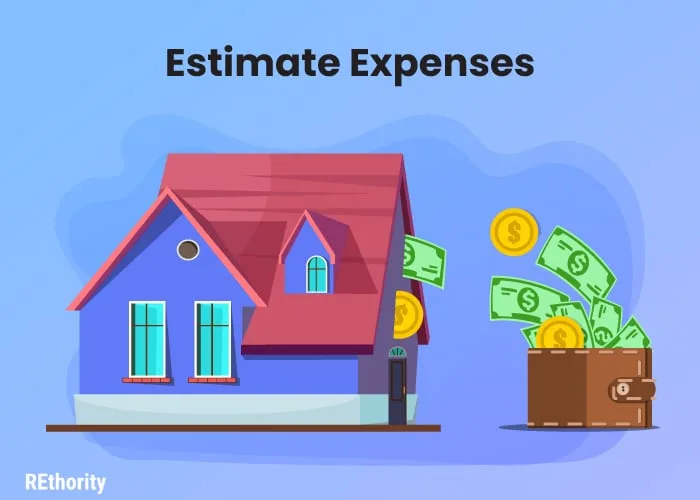
Don’t go into the purchase of a rental property blindly without estimating what your expenses will be. While you can earn steady cash flow from the property, you’ll pay part of it back out to keep things running smoothly and the property in good condition.
Operating expenses are typically anywhere from 35% to 80% of the total amount you’ll earn from the rental property. Expenses like property taxes, maintenance, and repairs will need to be considered.
So if you charge $1,200/month for rent, operating expenses would be $420/month on the low end and $960/month on the high end.
Some investors recommend taking the middle ground in estimating operating expenses at about 50%. So using the $1,200/month rent example, you’d expect to pay about $600/month in operating expenses.
4. Scout Possible Locations
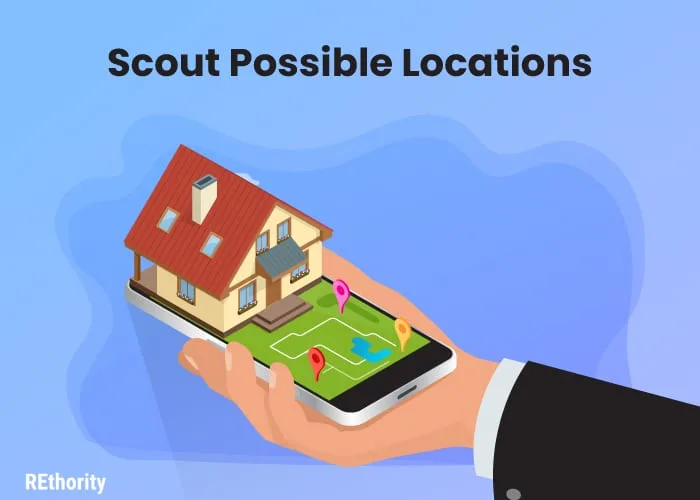
With an idea of how much you can afford to spend on a rental property, you can start scouting possible locations. Staying local will ensure you’re always nearby for inspections and if your tenant needs assistance in the future.
Think like an investor and look for a strong or growing real estate market to find a great location.
- What area is on track for growth?
- Where are new stores, schools, factories, company headquarters, or restaurants opening?
- Where is the population actively growing?
- Is there an area that is being revitalized or updated?
Balance the growth potential with other considerations like desirable school zones, proximity to attractions, the interstate, stores, restaurants, and overall crime rates.
If you can find a location that offers most or all of these amenities, you’ll have more people willing to rent there.
5. Narrow Possible Locations Down
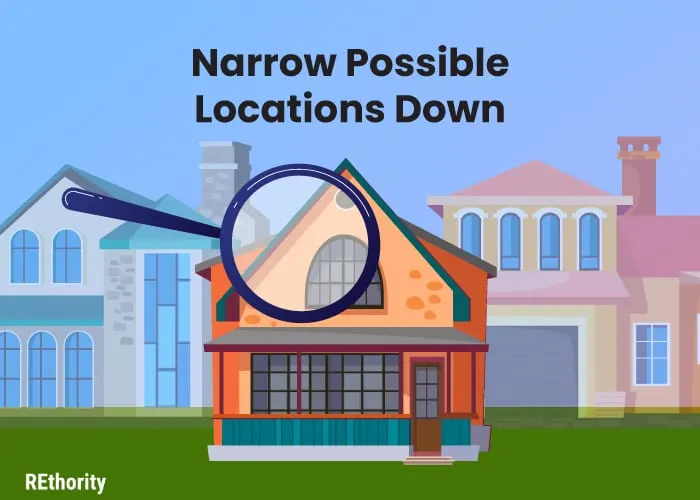
Narrowing down the areas you might be interested in can be tough. You may be able to decide by comparing neighborhood statistics.
- Compare average household income amounts. Which neighborhood is the best fit for the demographic you want to rent to?
- Find out how many single- and multi-family homes are for sale in each neighborhood. Is there enough selection for you to find a good rental property?
- Look at the average ages of homeowners and other renters in the neighborhood. Will your renter demographic feel at home here?
- Consider the average home and family sizes in each neighborhood. Many renters with children want to live near other families with children.
- Look at the average single- and multi-family home prices in each neighborhood. To maximize rental income without spending too much on a house, look for a neighborhood with homes in the median price range. It’s usually a good choice to go for a property that is neither the most expensive nor the cheapest on the block.
- If two neighborhoods seem equally viable, go for the one that is zoned for a better school district.
6. View and Compare Properties
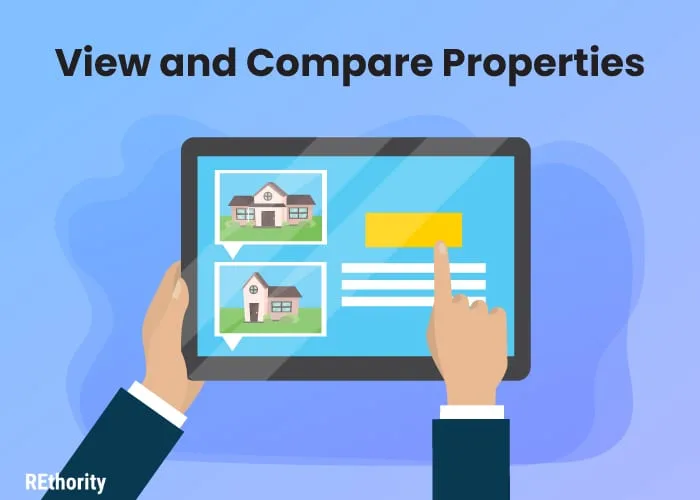
Now you can start looking at homes for sale in the areas and neighborhoods you’ve narrowed your choices to. You may want to work with a real estate agent or go at it alone to save the commission cost.
When you look at properties and decide which you’d like to schedule a showing, consider the asking price, market value, and how it compares with other homes.
It’s a good idea to stick to single-family homes at or below $150,000 for your first rental property. Which homes meet the criteria for your ideal renter demographic?
Investors look for properties that are priced at 10% to 20% below market value. But don’t make the mistake of looking for a fixer-upper if you’re new to real estate investing.
The cost of repairs and renovations can greatly exceed what you’ve estimated and eat up any profit you could’ve made. It’s a good idea to look for motivated sellers who are eager to sell the house quickly.
They may be moving for a job, downsizing to save money, in danger of foreclosure, or have liens on the property that they can’t afford to settle unless they sell.
Any of these situations can create an opportunity for you to buy the house below market value and close on it quickly.
7. Find Out What You Can Charge for Rent
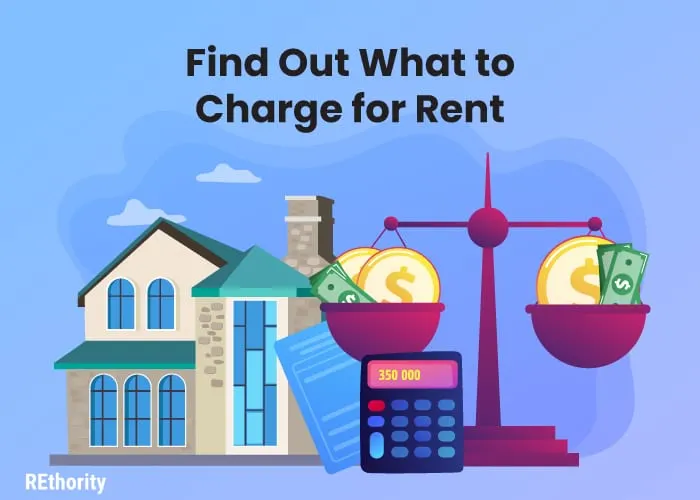
With the properties you like in mind, start looking at how much average rent is for similar homes in your area. Look at rent prices for homes with the same numbers of rooms and bathrooms, amenities, special features, etc.
If you are buying a duplex or apartment building instead, find out how much they typically rent for. Make a note of these figures and use them to help determine what you can charge for rent once you choose a property.
Try talking to local landlords and property managers to discover what they’re charging or collecting for rent. You may get some helpful advice and recommendations out of it, too!
Attending local real estate investor clubs or meetings can help you connect with other landlords and investors. A good rule of thumb for single-family homes is to charge at least 1% of the home’s purchase price for monthly rent.
A $150,000 house would rent for $1,500/month. That’s a littler harder to do in the suburbs where you’re competing against retail buyers. And in today’s hot market, this number is closer to .75%.
But regardless, the rule of thumb is that you can hit that 1%, you have a good chance of turning a profit after factoring in all expenses.
8. Calculate ROI and Cash Flow
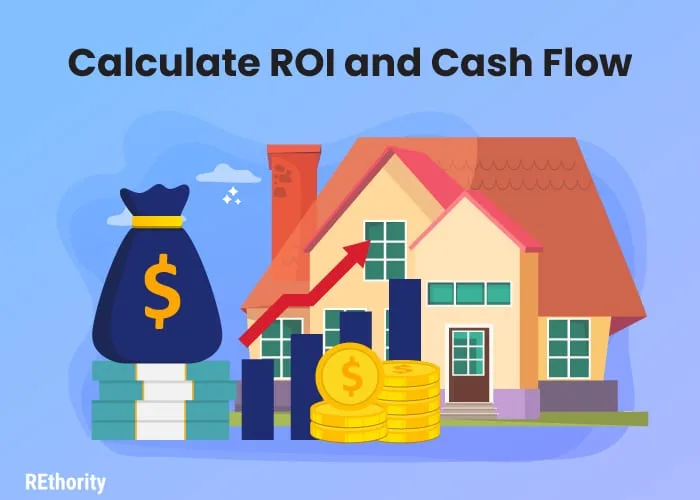
The end goal is to earn cash flow and a return on your investment. Aim for at least a 10% to 15% return, but the higher the better. Figure this out by subtracting the mortgage cost and expenses you pay from the rent you’re charging.
Let’s say you buy a $150,000 house and put $30,000 down. If you charge $1,500/month rent (1% of the purchase price) for 12 months, you’ll earn $18,000/year in rental income.
But you know you’ll be paying:
- $700/month on the mortgage for 12 months ($8,400)
- $100/month for maintenance ($1,200)
- $100/month for property taxes ($1,200)
In total, you think you’ll spend $10,800 in operating expenses each year. That leaves you with $7,200. From the $30,000 cash you put down on the house, that’s a 24% return!
Consider, though, that this is your bare-bones profit. While it sounds amazing, you need to save up to cover unexpected expenses like off-season vacancies, excessive tenant damages, or capital improvements.
Once you’ve calculated the returns you can get from the houses you’re considering, you’ll know which one is the right investment.
9. Arrange an Inspection and Appraisal
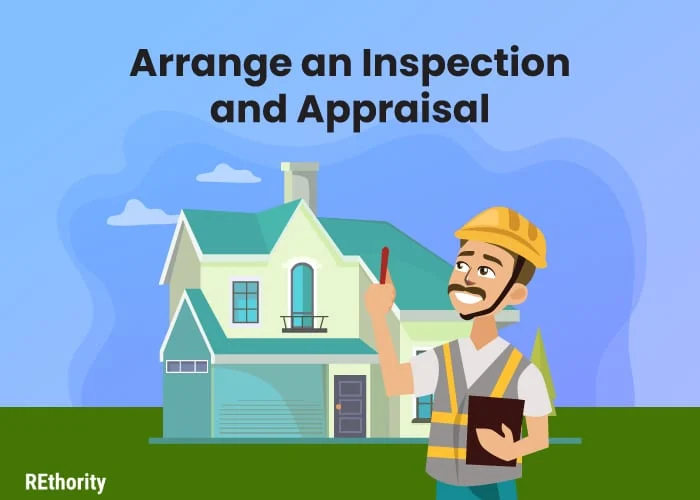
Before you buy, you will need to have an inspection and appraisal done on the property. Any issues found during the inspection could be major and prevent you from buying an expensive problem.
Smaller issues can help you negotiate an even better deal. If you’re financing the property, your lender will require an appraisal to ensure the house is worth the amount you want to finance.
The appraisal will also confirm whether or not you’re actually getting a good deal on the house.
10. Buy and Insure the Rental Property
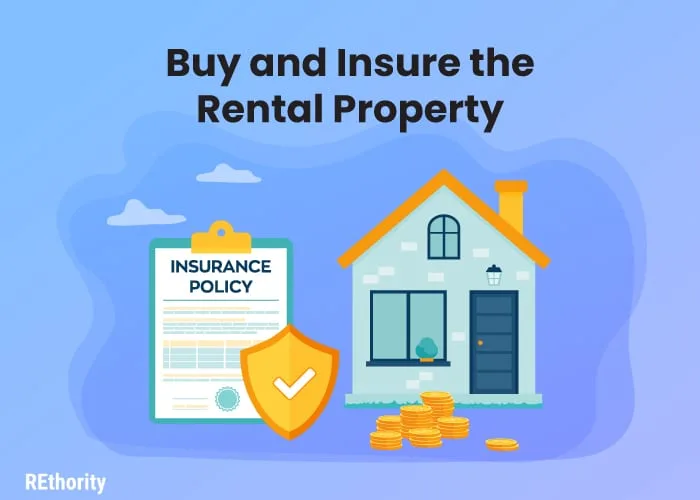
If the inspection doesn’t reveal major problems and the appraisal is within the expected range, you’re ready to buy the rental property. You’ll work with your lender to pay the down payment and complete financing.
Your lender will require that you get homeowner’s insurance, but it’s smart to look into umbrella and landlord insurance as well.
You may be able to bundle these policies with your homeowner’s insurance policy. Umbrella insurance protects you and any other assets from accidents and lawsuits.
Landlord insurance covers unpaid rent, property damage, and liability. At closing, you’ll sign paperwork and receive the keys to the property. You’re now ready to find a tenant and start earning rental income!
How to Buy Rental Property: Final Thoughts

You’ve already taken several steps to prepare and purchase a rental property, but you’re not quite done yet. There are a few critical considerations.
Before you create a lease or accept a tenant, make sure you’ve reviewed local and state laws regarding fair housing, evictions, lease requirements, security deposits, and tenant rights.
Make sure to thoroughly clean the house and that all kitchen appliances and furnishings are in good condition. Replace any window treatments that are outdated or dingy.
You may consider making small improvements, like replacing flooring in a room or painting the interior. Stay within a budget to avoid shrinking your profits. Screen and vet every applicant to ensure you’re accepting a reliable and trustworthy tenant.
Look for a solid work history that you can verify, plenty of monthly income to cover rent and other expenses, no prior evictions, and a clean background and criminal check.
If you do your research and accurately calculate your cash flow and returns, buying your first rental property could pave the way for many more future investments.

